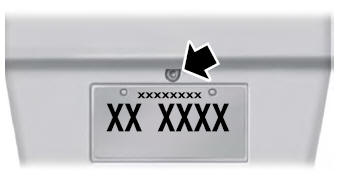Lincoln Corsair: Fuel Charging and Controls - Turbocharger - 2.0L EcoBoost (177kW/240PS) – MI4 / Description and Operation - Turbocharger - System Operation and Component Description
System Operation
Turbocharger And Charge Air Cooler (CAC) Systems
A turbocharger is an exhaust gas driven device used to increase the power output of an engine by the turbocharger compressor increasing the pressure of the air entering the engine. The turbocharger uses exhaust gas energy to drive the turbine connected to the compressor. Compressing the air causes the temperature to increase. The CAC lowers the temperature of compressed air which increases the density of the air before entering the cylinder.
The turbocharger bypass valve is used to create a path from the high pressure compressor outlet to the low pressure compressor inlet. This path recirculates airflow to reduce turbocharger lag and prevent unwanted air rush noise from the turbocharger on heavy throttle releases.
The wastegate on the turbocharger turbine side is opened to reduce exhaust gas flow through the turbine when boost pressure is not needed. An electric motor controls the wastegate valve opening. The turbocharger wastegate is controlled by the PCM by positive and negative voltage signals to the turbocharger wastegate motor.
The turbocharger wastegate motor is an electric stepper motor. The PCM controls the turbocharger wastegate motor to change the position of the actuator linkage open or closed based on various engine airflow conditions depending on vehicle configuration and requirements such as fuel economy and boost performance. The turbocharger wastegate motor also contains an integral position sensor for turbocharger wastegate position feedback to the PCM .
The 4 cylinder system uses only 1 turbocharger, 1 turbocharger wastegate and 1 turbocharger bypass valve. The turbocharger bypass valve is electric and mounted in the intake air system.
Charge Air Cooler (CAC) System — Air To Air Cooled
The CAC system cools the intake air which has been heated by the turbocharger. The removal of heat from the pressurized air going into the CAC increases the air density which improves combustion efficiency, engine horsepower, and torque. The system consists of a CAC radiator in the grille and tubing to interconnect these components. The CAC is positioned after the turbocharger directly in the flow of the intake air. As the heated air flows through the CAC , it is cooled by the airflow through the grille. The PCM maintains a desirable intake air temperature by monitoring the TCBP/CACT (located at the throttle body) and the MAP / IAT2 (located at the intake manifold) sensors.
Component Description
Turbocharger
The turbocharger assembly is an exhaust driven centrifugal compressor. Expanding exhaust gases drive the turbine shaft assembly to speeds over 100,000 RPM . The turbocharger increases the power output of an engine by increasing the mass of air entering the engine.
The turbocharger has an integrated wastegate, an electric wastegate motor and a remote bypass valve.
Turbocharger Bypass Valve
The turbocharger bypass valve prevents back flow through the turbocharger when the throttle is rapidly closed to avoid undesirable noise. The high pressure downstream of the turbocharger is vented back to the intake air upstream when the turbocharger bypass valve is open reducing pressure in the system.
The turbocharger bypass valve is solenoid controlled and located between the turbocharger intake and the turbocharger boost pressure output to the CAC .
Turbocharger Wastegate Motor
The turbocharger wastegate motor is attached to the turbocharger and allows the PCM to control the turbocharger wastegate position. The turbocharger wastegate motor controls the turbocharger wastegate linkage position to control the boost pressure limit. During driving conditions, the PCM controls the turbocharger wastegate motor position with positive and negative voltage circuits, to change the position of the turbocharger wastegate to increase or decrease the boost pressure to the desired value. The PCM monitors the turbocharger wastegate position sensor signal for feedback on the wastegate motor performance, and to detect a stuck wastegate. The turbocharger wastegate position sensor is integral to the turbocharger wastegate motor.
 Diagnosis and Testing - Turbocharger Controls
Diagnosis and Testing - Turbocharger Controls
Diagnostic Trouble Code (DTC) Chart
Diagnostics in this manual assume a certain skill level and knowledge of Ford-specific diagnostic practices. REFER to: Diagnostic Methods (100-00 General Information, Description and Operation)...
Other information:
Lincoln Corsair 2020-2025 Service Manual: General Procedures - Transmission Fluid Level Check
Special Tool(s) / General Equipment Funnel Materials Name Specification Motorcraft® MERCON® ULV Automatic Transmission FluidXT-12-QULV WSS-M2C949-A, MERCON® ULV Check Connect the diagnostic scan tool to the vehicle...
Lincoln Corsair 2020-2025 Service Manual: General Procedures - Camshaft Surface Inspection
Inspect the camshaft lobes for pitting or damage in the active area. Minor pitting is acceptable outside the active area. The active area includes the opening ramp and closing ramp. The opening ramp is the point where the lifter just begins to lift until the point it reaches the nose of the lobe...
Categories
- Manuals Home
- 1st Generation Lincoln Corsair Owners Manual
- 1st Generation Lincoln Corsair Service Manual
- Opening and Closing the Hood
- Interior Lamps
- Automatic Transmission - 8-Speed Automatic Transmission – 8F35/8F40
- New on site
- Most important about car
360 Degree Camera Cameras
Locating the Rear View Camera

The rear view camera is on the tailgate.
Locating the Front View Camera

